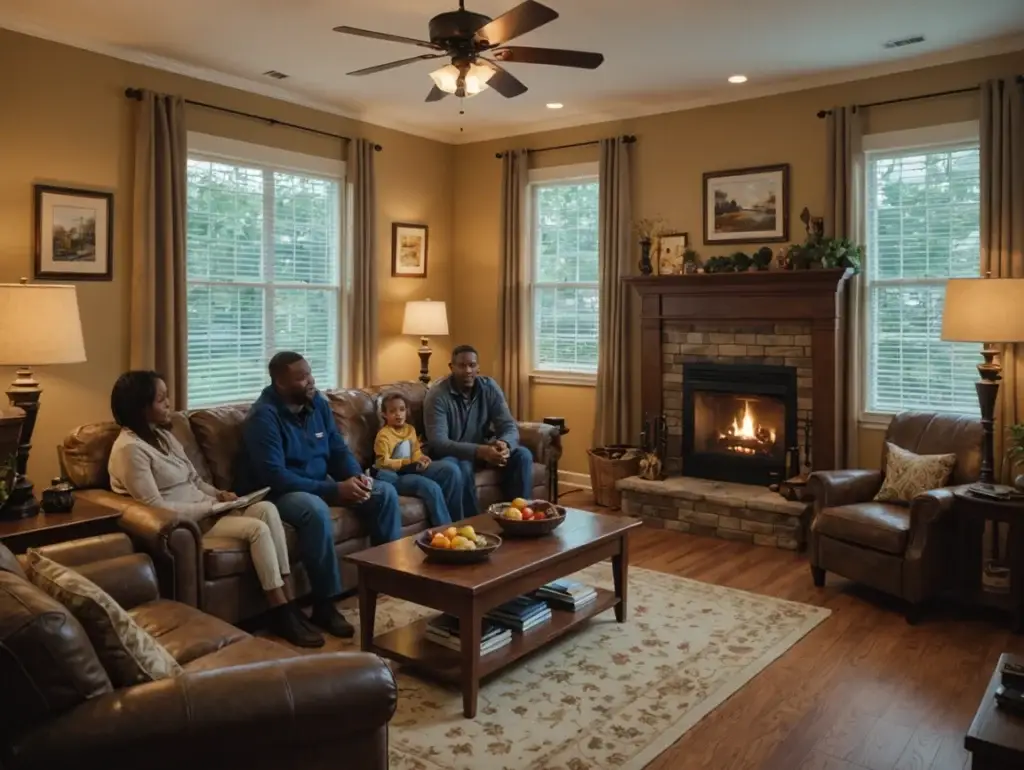[vc_row][vc_column][vc_column_text]Ceiling fans have long been a staple in homes across various climates, lauded for their ability to enhance comfort during warmer months. However, a common question persists: Does running a ceiling fan actually keep the room cooler? The short answer is no, but the full explanation reveals how ceiling fans play a crucial role in the perceived comfort within a room. Let’s dive into the dynamics of ceiling fans and how they contribute to a cooler feeling without lowering the room’s temperature.
Understanding the Ceiling Fan Effect
Ceiling fans operate by circulating air within a room. When the fan blades rotate, they create a breeze that moves air over your skin. This air movement enhances the evaporation of sweat from your skin, a natural cooling mechanism your body uses to regulate temperature. Essentially, while the fan itself does not decrease the room’s temperature, it makes the room’s occupants feel cooler by accelerating sweat evaporation, leading to increased comfort.
Energy Efficiency and Cost Savings
One of the significant benefits of using ceiling fans is their energy efficiency compared to air conditioning units. Ceiling fans consume significantly less electricity, making them a cost-effective option for enhancing comfort during hot weather. By relying on ceiling fans to improve comfort, homeowners can raise the thermostat setting by a few degrees without compromising comfort, leading to considerable savings on cooling costs.
Optimizing the Use of Ceiling Fans
To maximize the benefits of ceiling fans, consider the following tips:
Direction Matters:
Ensure your ceiling fan rotates counterclockwise during summer. This direction pushes cool air down, creating that refreshing breeze. Most fans have a switch to change the rotation direction for seasonal use.
Adjust the Thermostat:
If you’re using ceiling fans, adjust your thermostat accordingly. Raising the temperature setting by just 4°F (about 2°C) can still maintain comfort levels and save on air conditioning costs.
Turn Off When Not in Use:
Because ceiling fans cool people, not rooms, it’s energy-wise to turn them off when the room is unoccupied.
Choose the Right Size:
The effectiveness of a ceiling fan also depends on its size relative to the room. Larger rooms require fans with longer blades to circulate air effectively.
The Limitations of Ceiling Fans in Extreme Heat
While ceiling fans are excellent for improving comfort during moderately hot days, they may not suffice in extreme heat conditions, especially in areas with high humidity levels. In such scenarios, air conditioning becomes necessary to reduce the room’s actual temperature, providing relief from the heat.
Integrating Ceiling Fans and Air Conditioning
For optimal cooling and energy efficiency, combining the use of ceiling fans with air conditioning can be highly effective. The ceiling fan will allow you to set the air conditioning at a higher temperature, reducing energy consumption while still maintaining a comfortable indoor environment.
A Cool Breeze of Relief
Ceiling fans may not lower room temperatures, but their ability to make occupants feel cooler can’t be understated. By creating a breeze that facilitates sweat evaporation, ceiling fans effectively enhance comfort during warmer months. Additionally, their energy efficiency and cost-saving potential make them an indispensable tool in the home comfort arsenal.
In conclusion, while ceiling fans alone may not be the answer to beating the summer heat, they play a significant role in creating a more comfortable and energy-efficient home environment.
[/vc_column_text][/vc_column][/vc_row]


